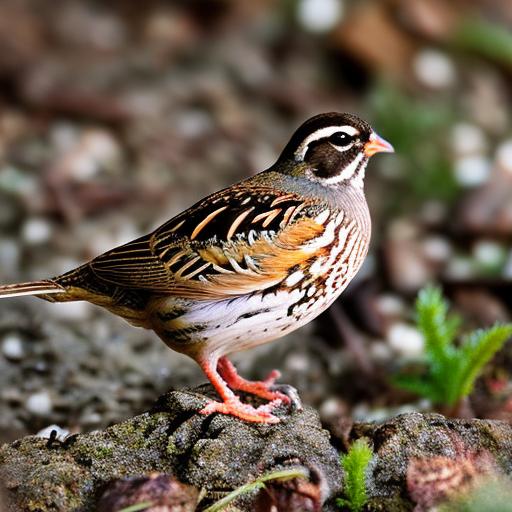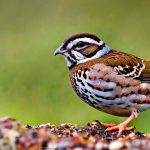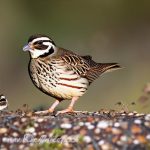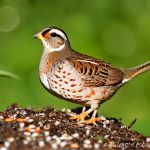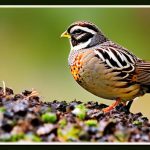Keeping quail in a Johnny House can be a rewarding and enjoyable experience for anyone interested in raising these small game birds. A Johnny House is a type of housing specifically designed for quail, providing them with a safe and comfortable environment to thrive in. Whether you are a hobbyist or a commercial quail farmer, a well-maintained Johnny House can ensure the health and productivity of your quail flock. In this article, we will explore the various aspects of keeping quail in a Johnny House, including choosing the right location, setting up the house, feeding and watering the quail, maintaining their health and safety, breeding and raising quail, and tips for successful quail keeping.
Quail are known for their delicious meat and eggs, making them a popular choice for many farmers and homesteaders. They are also relatively easy to care for and can thrive in a variety of environments. However, providing them with a suitable living space is crucial for their well-being and productivity. A Johnny House is an ideal housing option for quail, as it allows for easy management and care of the birds. By understanding the specific needs of quail and providing them with a well-designed living space, you can ensure that your quail flock remains healthy and productive.
Key Takeaways
- Keeping quail in a Johnny House is a great way to raise these birds for eggs and meat in a small space.
- Choosing the right location for your Johnny House is crucial for the health and safety of your quail.
- Setting up the Johnny House for quail involves providing proper bedding, nesting boxes, and ventilation.
- Feeding and watering your quail in the Johnny House requires a balanced diet and clean water at all times.
- Maintaining the Johnny House is essential for quail health and safety, including regular cleaning and predator-proofing.
Choosing the Right Location for Your Johnny House
When it comes to setting up a Johnny House for quail, choosing the right location is crucial for the well-being of the birds. The location should provide a safe and secure environment for the quail, while also allowing for easy access and management. Ideally, the Johnny House should be situated in an area that is sheltered from extreme weather conditions, such as strong winds and heavy rainfall. It should also be located away from potential predators, such as foxes, raccoons, and stray cats. Additionally, the location should have good drainage to prevent waterlogging and ensure a dry living environment for the quail.
Furthermore, the location should have access to natural sunlight, as this is essential for the health and well-being of the quail. Natural sunlight provides the birds with essential vitamins and helps regulate their internal clock, promoting healthy growth and egg production. When choosing a location for your Johnny House, consider the orientation of the house to maximize sunlight exposure throughout the day. Lastly, the location should be easily accessible for daily maintenance and care of the quail. This includes providing easy access to food and water sources, as well as allowing for efficient cleaning and waste management.
Setting Up the Johnny House for Quail
Setting up a Johnny House for quail involves creating a suitable living space that meets the specific needs of these small game birds. The house should provide adequate space for the quail to move around freely, as well as nesting areas for egg-laying hens. The flooring of the house should be covered with a suitable bedding material, such as straw or wood shavings, to provide insulation and comfort for the birds. Additionally, the house should be well-ventilated to ensure good air quality and prevent the buildup of ammonia from bird droppings.
Furthermore, the Johnny House should be equipped with suitable roosting perches for the quail to rest on. These perches should be positioned at varying heights to accommodate the different sizes of quail in the flock. Providing roosting perches not only gives the quail a place to rest but also helps prevent leg injuries and promotes natural behavior. In addition to roosting perches, the house should also have nesting boxes for egg-laying hens. These boxes should be filled with suitable nesting material, such as straw or hay, to provide a comfortable and secure environment for the hens to lay their eggs.
Feeding and Watering Your Quail in the Johnny House
Feeding and watering your quail in the Johnny House is essential for their health and productivity. Quail require a balanced diet that includes a combination of commercial feed, grains, greens, and protein sources. The commercial feed should be specifically formulated for quail and provide essential nutrients such as protein, vitamins, and minerals. Additionally, offering grains such as millet, corn, and oats can supplement their diet and provide enrichment. Fresh greens such as lettuce, spinach, and kale can also be offered to provide additional nutrients and promote natural foraging behavior.
In addition to feeding, providing clean and fresh water is crucial for quail health. Water should be easily accessible to the birds at all times, and it should be changed regularly to prevent contamination and ensure hydration. The water containers should be positioned at a suitable height to allow easy access for the quail while preventing spillage and contamination. Furthermore, during hot weather, it is important to provide shade and cooling options to prevent heat stress in the quail. This can include misting systems or shallow water baths for the birds to cool off in.
Maintaining the Johnny House for Quail Health and Safety
Maintaining the Johnny House is essential for ensuring the health and safety of your quail flock. Regular cleaning and sanitation of the house are crucial for preventing disease outbreaks and maintaining good air quality. This includes removing soiled bedding, droppings, and any leftover feed on a regular basis. The house should also be thoroughly cleaned and disinfected periodically to prevent the buildup of harmful bacteria and parasites.
Furthermore, inspecting the house for any signs of wear and tear is important for preventing escapes and protecting the quail from potential predators. This includes checking for any holes or gaps in the walls or flooring that could allow predators to enter the house. Additionally, ensuring that all doors and windows are secure can prevent escapes and protect the quail from harm.
Breeding and Raising Quail in the Johnny House

Breeding and raising quail in a Johnny House can be a rewarding experience for those interested in expanding their flock or producing quail meat and eggs. When it comes to breeding quail, providing suitable nesting areas is crucial for encouraging egg-laying behavior in hens. The nesting boxes should be filled with suitable nesting material to provide a comfortable environment for the hens to lay their eggs. Additionally, providing a balanced diet with adequate protein can help promote healthy egg production in breeding hens.
Once the eggs are laid, they can be collected daily to prevent breakage or contamination. The eggs can then be incubated using an appropriate incubator or left with broody hens to hatch naturally. Providing suitable brooding areas for newly hatched chicks is essential for their survival and growth. This can include heat lamps or heated brooders to maintain optimal temperature conditions for the chicks.
Tips for Successful Quail Keeping in a Johnny House
Successfully keeping quail in a Johnny House requires attention to detail and regular maintenance of their living environment. Providing suitable housing with adequate space, ventilation, roosting perches, and nesting areas is crucial for their well-being. Additionally, offering a balanced diet with commercial feed, grains, greens, and protein sources can ensure their nutritional needs are met.
Regular cleaning and sanitation of the house are essential for preventing disease outbreaks and maintaining good air quality. This includes removing soiled bedding, droppings, and any leftover feed on a regular basis. Furthermore, inspecting the house for any signs of wear and tear is important for preventing escapes and protecting the quail from potential predators.
Breeding and raising quail in a Johnny House requires providing suitable nesting areas for egg-laying hens and ensuring optimal conditions for incubation and brooding of chicks. By following these tips and guidelines, you can ensure the health and productivity of your quail flock in a Johnny House.
If you’re considering keeping quail in a johnny house, you might also be interested in learning about the benefits of using a SnapLock Chicken Coop. This innovative coop design offers convenience and security for your poultry, making it an ideal choice for small-scale farming. To find out more about the SnapLock Chicken Coop, check out this informative article on PoultryWizard: SnapLock Chicken Coop.
FAQs
What is a Johnny house?
A Johnny house is a small, enclosed structure used for keeping quail. It provides shelter and protection for the quail while allowing them to roam freely within a confined space.
What are the benefits of keeping quail in a Johnny house?
Keeping quail in a Johnny house provides a controlled environment for the birds, protecting them from predators and the elements. It also allows for easy access to the quail for feeding, watering, and egg collection.
How big should a Johnny house be for keeping quail?
The size of a Johnny house for keeping quail can vary depending on the number of quail being housed. A general rule of thumb is to provide at least 1 square foot of space per quail.
What should be included in a Johnny house for keeping quail?
A Johnny house for keeping quail should include roosting areas, nesting boxes, feeders, and waterers. It should also have proper ventilation and be predator-proof to ensure the safety and well-being of the quail.
What type of flooring is best for a Johnny house for quail?
The flooring of a Johnny house for quail should be easy to clean and provide good drainage. Common options include wire mesh, gravel, or a solid floor with a layer of bedding material such as straw or wood shavings.
Meet Walter, the feathered-friend fanatic of Florida! Nestled in the sunshine state, Walter struts through life with his feathered companions, clucking his way to happiness. With a coop that’s fancier than a five-star hotel, he’s the Don Juan of the chicken world. When he’s not teaching his hens to do the cha-cha, you’ll find him in a heated debate with his prized rooster, Sir Clucks-a-Lot. Walter’s poultry passion is no yolk; he’s the sunny-side-up guy you never knew you needed in your flock of friends!

